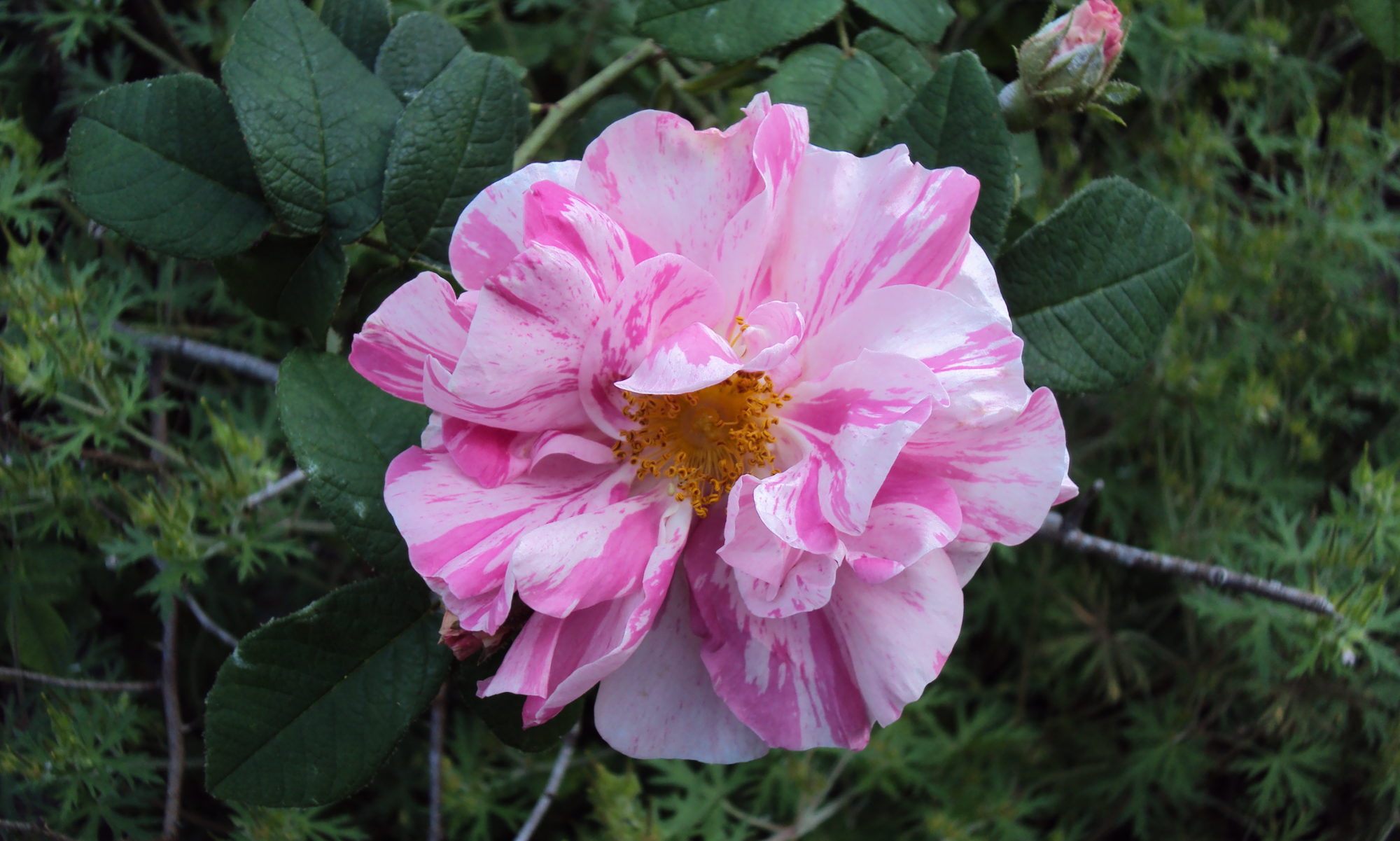The American Rose Society has a program called Consulting Rosarian for members who are willing to help the public with questions about growing roses. I have been a CR for over 10 years and one of the provisions for maintain certification is to attend a CR school or accumulate 4 approved continuing ed credits over 4 years. It used to be that the programs at the Carolinas District winter meeting would count for these credits. Alas, a combination of a tightening of what was considered “approived” and the fact that i have not been able to attend the winter meeting as often has meant that I came up short this year but the Carolinas district decided not to hold a CR school this yuear. Fortunately,, the Colonial District (Virginia, Maryland, and West Virginia) decided to hold a CR school at their fall meeting/rose show in Virginia Beach. Score!
The meeting and show were held at The Virginia Beach Resort Hotel and Conference Center. I drove the 3.5 hours on Friday night, not a bad drive, getting in about 11pm. Three of the sessions were on Saturday and the last on Sunday morning. Not much new; it was pretty basic stuff but the half dozen other folk who were also re-certifying (there were no new folk in the class) did have interesting comments about what has been working for them (or not).
One of the themes that is central to the CR program in IPM (integrated Pest Management), the idea of assessing what an individual’s threshold of damage is then looking for the least invasive/aggressive method of accomplish that result will be. Roses have a reputation of being hard and labor intensive to maintain. That can be true if your objective is to exhibit roses, particularly on a national level. But that’s true for any endeavor at that level whether it’s roses or dogs or ultimate frisbee or civil war reenactment. It takes time and effort. Most people are not trying to grow roses for competition so can tolerate a level of blackspot or insect damage that would not pass in a competition. People also have to rake their environment into account. One of the ladies in the class talked about how she is grown roses but also has free-range chickens and other animals and is planning to get bees next year. She has to be very careful what pesticides she uses, if any, For example, she doesn’t use anything for japanese beetles, depending on the “pick and squish” method of control (a manner practiced by all most everyone there, though a number also talked about the “drop the buggers into a container of soapy water until they drown” technique). She said the chicken eat every squished beetle she drops; the chickens are actually trained to come when she calls.
I did learn that Rose Midge has been a bad problem this year and some folk had few any blooms until they treated for the midges. Looking online, it looks like imidacloprid has been one of the standard treatments in the past; I have mentioned in the past my decision to avoid that product based on the evidence that it plays a part in the decline of bees. A new product was mentioned called Transport Mikron that is effective on Rose Midge lI also hear about using clear nail polish to seal canes from cane borer wasps.
During the break yesterday, I did take a look at the roses in the show. Lots of beautiful blooms, mostly hybrid teas (which was not unexpected) and shrub roses and only a few OGRs, also not unexpect; it’s the wrong season for many of them. Now I can’t remember what was there; I should have take a picture or two. I remember the winner was pink and quite familiar… and a very nice specimen, with perfect leaves. In the evening was the banquet and I managed to pick up two new books, including a signed copy of “Everyday Roses: How to Grow Knock Out® and Other Easy-Care Garden Roses” by Paul Zimmerman, a pair of rubber palmed gloves, and three jars of fig jam, through the silent auction and raffle. Not bad for an investment of $12.
So one of the things that really struck me from weekend is I really need to get the pH of my soil up into the correct range. Chances are that is one of the biggest impediments to my bushes. Looking back, it kind of makes sense. I had good success initially but as time went by and the soil because more and more acid, my success started decreasing. In addition to putting down the lime to sweeten the soil,, I also need to get a good hand-held pH meter, like Kelway pHD soil pH tester, so I can be more proactive about checking where things are. The soil analysis I got back said that I have plenty of nutrients in the soil and the stuff I learned in the lectures says that my soil pH is so low that most of the nutrients are tied up in forms that the plant can’t access.
At this point, I am on my way home from Virginia Beach. I should stop writing this blog post and get on the road and maybe I will get home with enough daylight left to actually get some lime and apply it to at least some of the rose beds.
Enough for now.
